Last updated 18 March 2022
Japan’s culture is based on history, tradition and hospitality. The perfect combination of these three are found deep within the mountains of the Yamanashi Prefecture inside the walls of the world’s oldest inn
I’m asked my name then directed to a pair of slippers with a tag printed: “Jennifer.”
As I remove my shoes and change into my slippers, I admire my name tag written in both Japanese and English. Thinking the paper name tag is a neat souvenir, I pick it up and wander inside.
I’ve only walked a few paces when I realise I’m being chased by one of the hotel employees who, bowing profusely points to the slip of paper in my hand. I’ve upset their system. Apparently, the paper tag is required to return shoes to their rightful owner on departure. Smiling, I dutifully hand the slip of paper over. I’ve been in Japan long enough to know they value order.
Welcome to Nishiyama Keiunkan
My 21-year-old son and I are at Keiunkan, a hot-spring hotel 133 kilometres west of Tokyo. Located in the Yamanashi Prefecture, Keiunkan nestles comfortably into the Yukawa ravine and is surrounded by the south Japanese Alps. Also referred to as Koshu Nishiyama Onsen (there are six onsen baths), the hotel proudly proclaims their status as the world’s longest-standing inn.
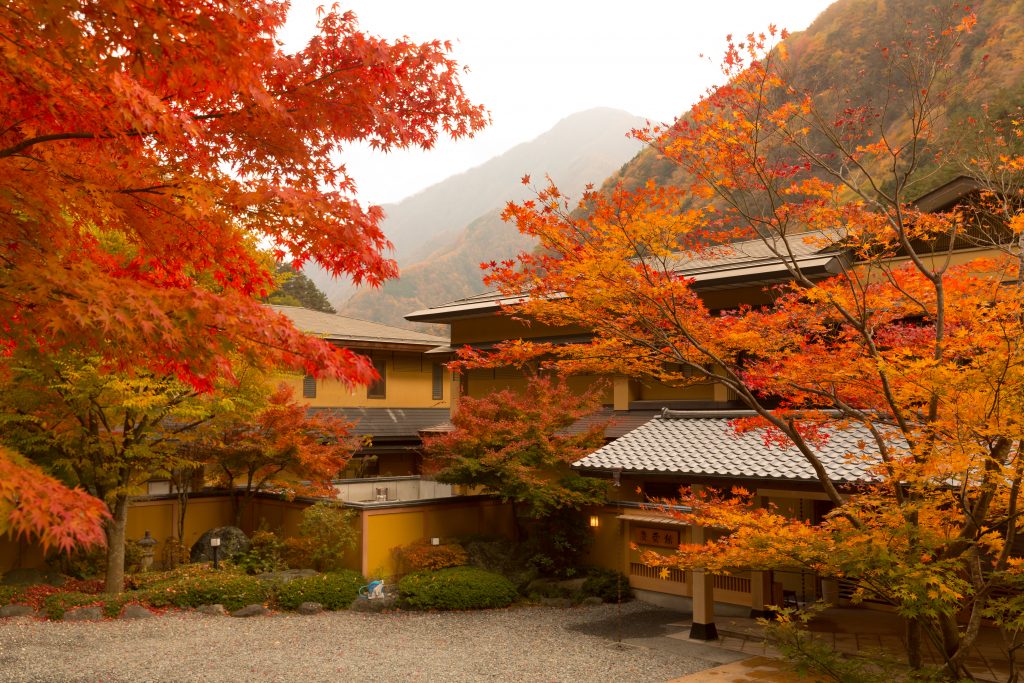
Founded in 705 AD by Fujiwara Mahito, the inn has remained in the same family for 52 generations. They’re certified by the Guinness Book of Records as the ‘oldest hotel in the world’.
The continuously flowing hot springs have provided relaxation for guests ranging from local townsfolk, to samurai warriors and royalty. The founder of the dynasty that ruled Japan from 1600 – 1868, Tokugawa Ieyasu (1543 – 1616) is said to have visited Keiunkan twice.
Over the 1,300 plus years of operation, the inn has undergone significant modification. And today, Keiunkan provides a five-star experience.
A special Japanese welcome
Following the name tag episode, we’re beckoned to sit down on one of the chairs in the hotel lobby. Chikako Harbour, a front desk associate, who speaks very good English, approaches. She’s holding a tray and offers a warm refresher towel and a tangy drink – yuzu and lemon. She opens a hotel map, then runs through what we can do over the afternoon, evening and next morning before we take the complimentary transfer shuttle bus back to Minobu station.
“You must try the outdoor onsen,” suggests Chikako smiling. Of the six onsens, four are open-air baths and two are indoor that rotate between men only and women only.
“I like Boukei no Yu the best,” she says pointing to it on the map. “You can gaze up at the stars as you rest your head on the edge of the bath.”
Chikako recommends we book our complimentary private outdoor onsen. “Book it now or you may miss out,” she says. We agree and with typical Japanese efficiency, Chikako organises dinner for 6pm, breakfast at 8:30am and a 40-minute private ‘session’ in Seoto – an open-air bath.
Chikako escorts us to our room. We take the lift down to the first floor and step into a long hallway. I wonder how we’ll find room #108 as they look similar, but an A4 sized sign outside our door has my name in English and Japanese. Will I be allowed to keep this one tomorrow, I wonder?
Room with a view
Our standard room has a view of the ravine that somewhere down the way leads into the Hayakawa River. The tatami floors, sliding doors, a low table and low chairs are very traditional Japanese. A bathroom with shower and bath are a more modern addition. There is a separate toilet and an entranceway to leave your internal shoes. Different slippers are required for walking on tatami (a traditional Japanese mat). Chikako ushers us inside and we sit in chairs at the low table. She kneels comfortably and prepares tea using a kettle and cups from the corner of the room.
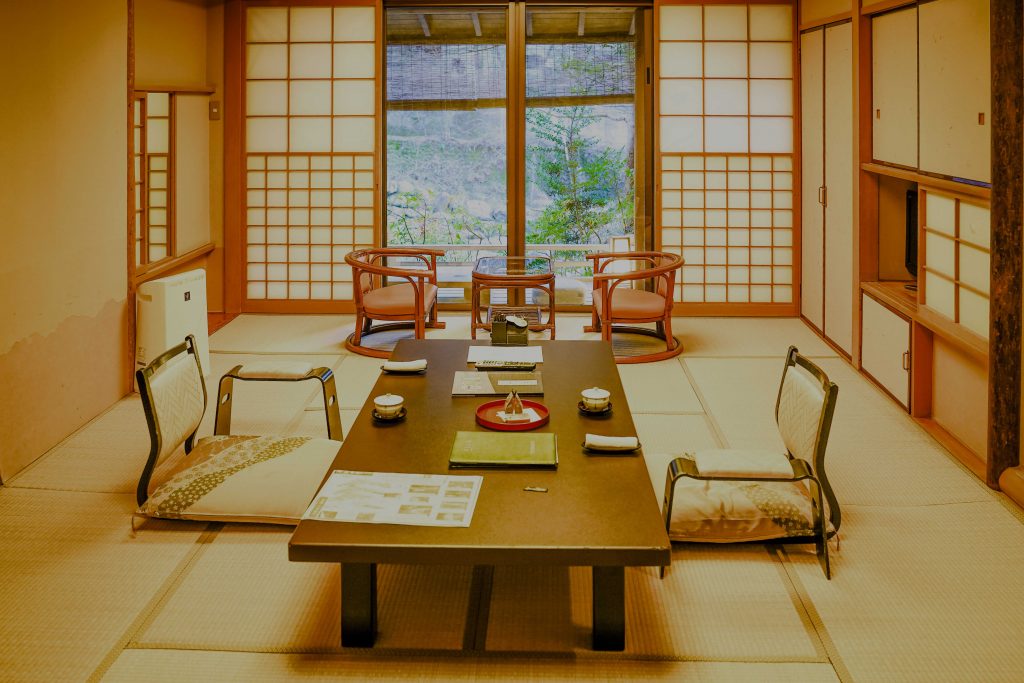
Outdoor onsen
I’m looking forward to trying our private bath, Seoto and bathing outside in the fresh January afternoon air. But as a pre-cursor to any onsen experience, onsen etiquette requires one to shower first. There was a time when there were no issues showering with my son – but that was over 18 years ago and he was a toddler! By utilising the change rooms independently while the other waits outside, with a little co-ordination, my son and I manage to shower and slip beneath the hot spring water without feeling embarrassed.
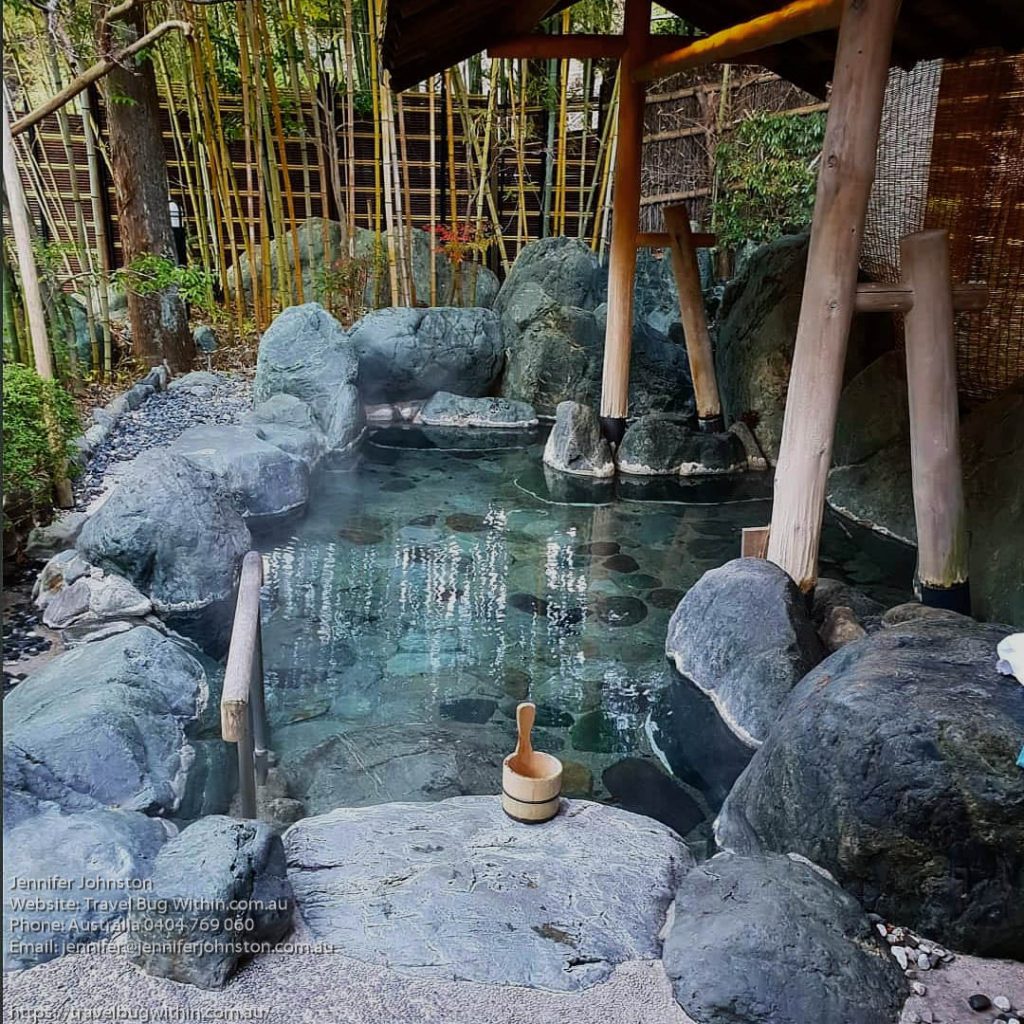
Steam rises from the mineral-filled water piped directly out of underground volcanic springs. The water temperature is around 43 degrees Celsius. I wonder if the samurai warriors slipped into relax mode as easily as we did?
Dinner time
Dressed in our cotton yukata (casual Japanese kimono) we arrive at dinner punctually on time. A woman dressed elegantly in a pale lemon kimono guides us to our table. The menu is printed on beautiful parchment paper, again with my name.
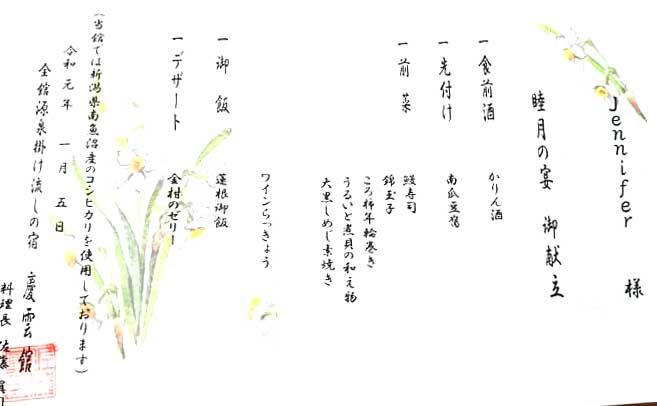
I’m not sure what we’ll be eating as I can’t read the Japanese menu and our hostess speaks minimal English. But with my son’s conversational Japanese and our hostess’s animated explanations, we enjoy the various dishes from the Mountain Kaiseki Banquet. Each course made from fresh, local ingredients is presented on beautiful dinnerware.
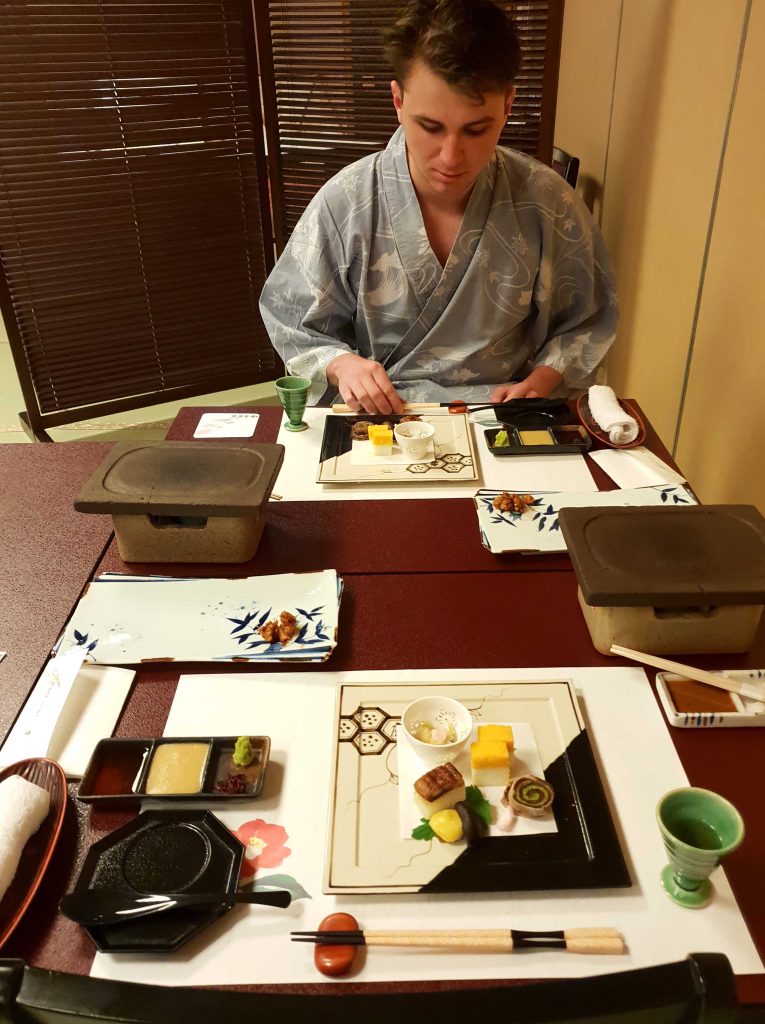
Using cooking chopsticks, we barbecue the raw thinly sliced Koshu beef and vegetables on individual clay grills, cooking the pieces of mouth-watering beef to perfection.
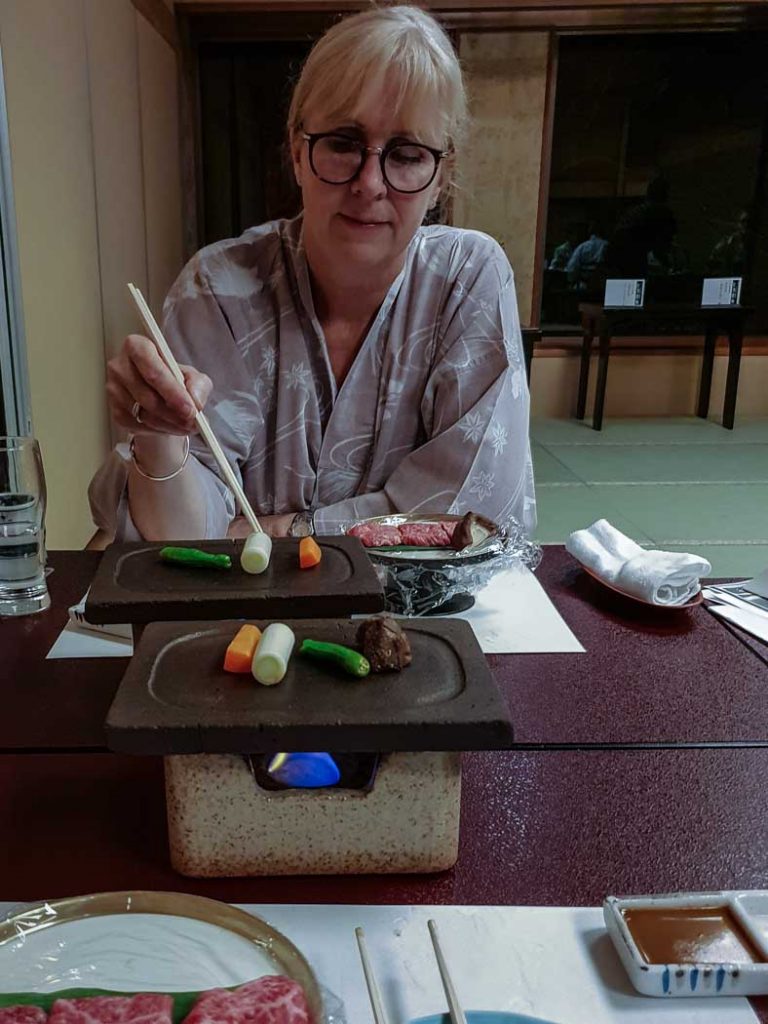
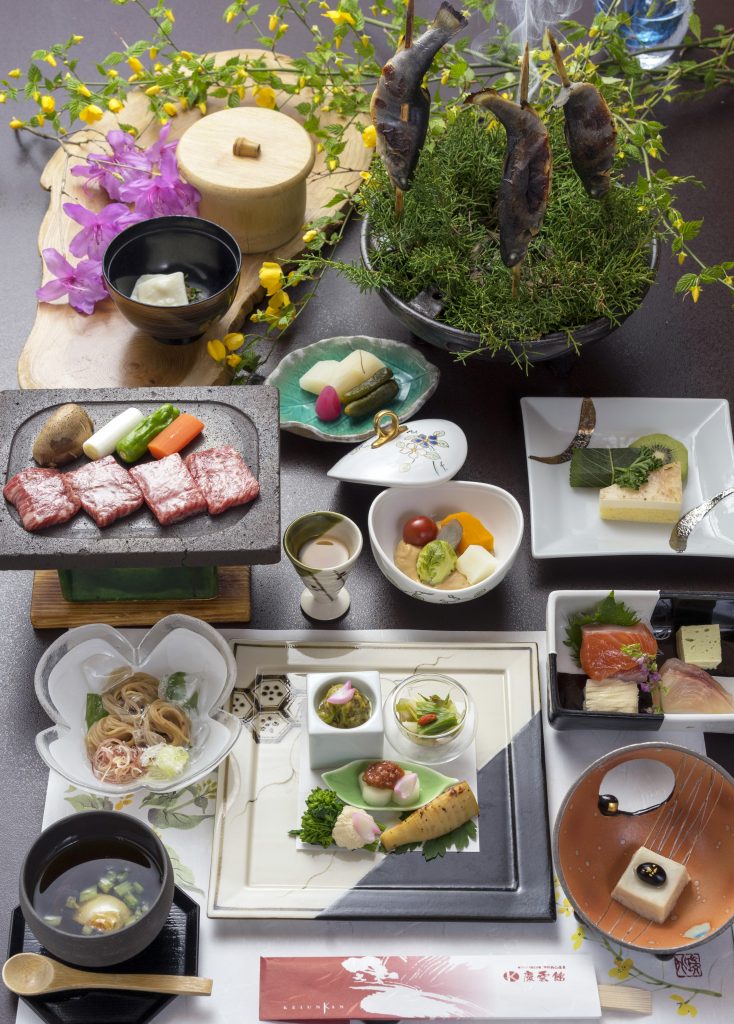
Bedtime
The bedmaking fairies have visited and two plump futons are set up on the floor of our tatami room. Our skin is scrupulously clean thanks to the previous three onsens we’ve managed to squeeze in. However we are in the world’s oldest Inn and we are leaving tomorrow.
We both decide there is time for one more onsen experience in the segregated (women and men) baths before retiring to our futons.
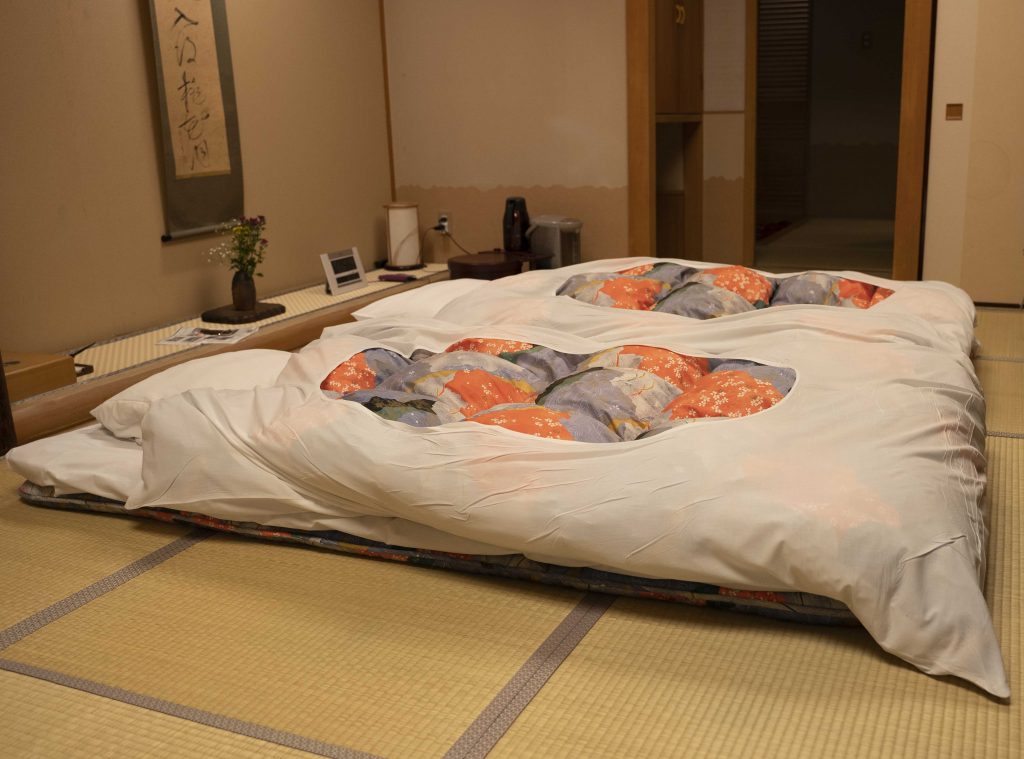
The following morning , breakfast is rushed. My son is keen for one more onsen experience and I want to explore beyond the hotel perimeter. Chikako recommends the swinging bridge, a three-minute stroll from the hotel entrance. The forest at the end of the bridge beckons, but I cannot explore further as the bus is leaving soon. A very strict 9:50 am departure time.
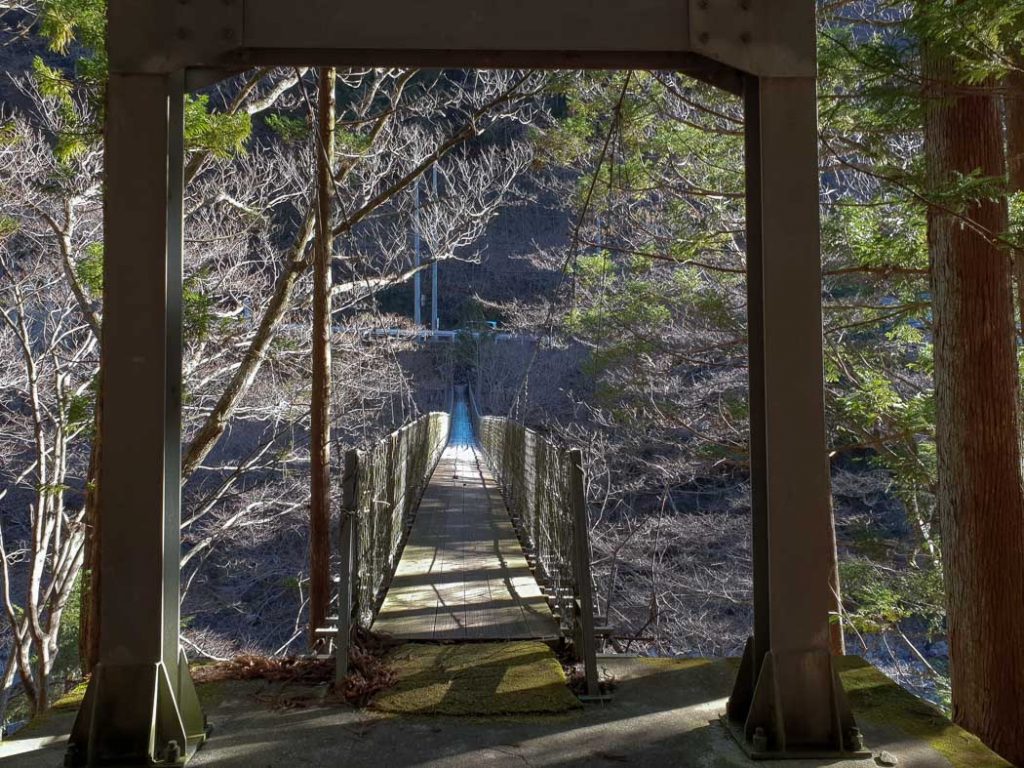
After checking out at the hotel reception and saying farewell to Chikako, I find my shoes sitting next to the monogrammed piece of paper. I scoop it up knowing this time I can keep it, without causing a fuss.
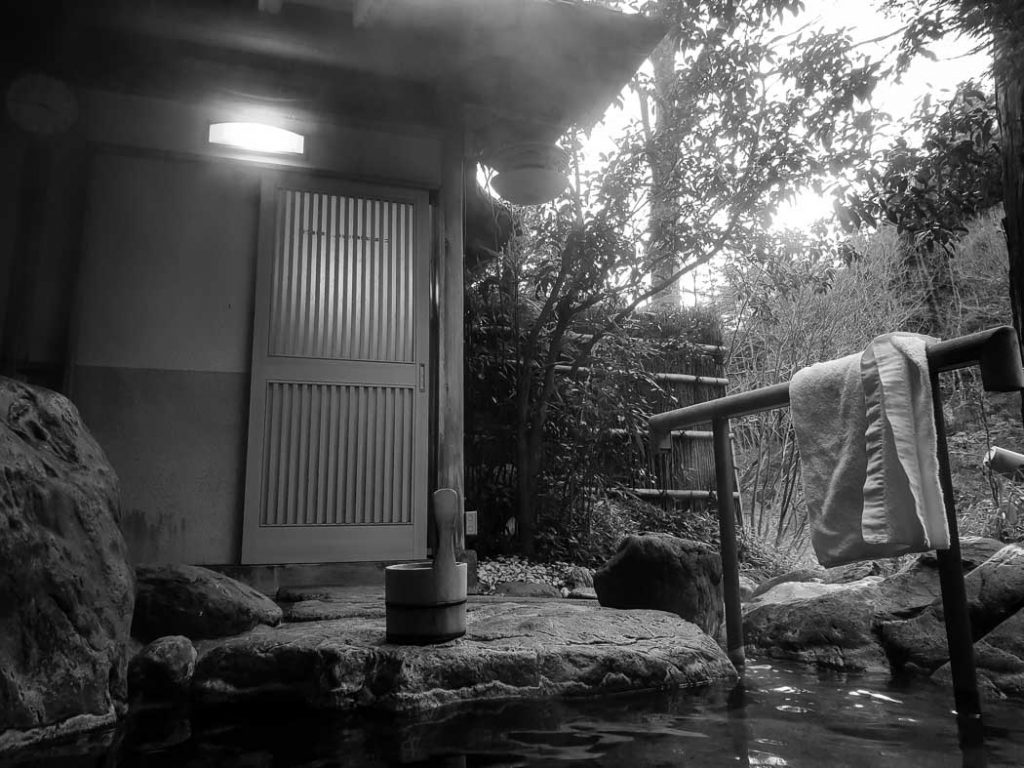
Getting there
By train: From Tokyo at Shinjuku, take the JR Limited Express to Kofu station> There you transfer to the Minobu line to Minobu station.
If coming from Nagoya, take the Tokaido Shinkansen to Shizuoka station, then transfer and take the Minobu line to Minobu station. The hotel’s shuttle bus departs from outside Minobu station at 1:40 p.m. (in time for check-in at 3 p.m.) Reservations are essential.
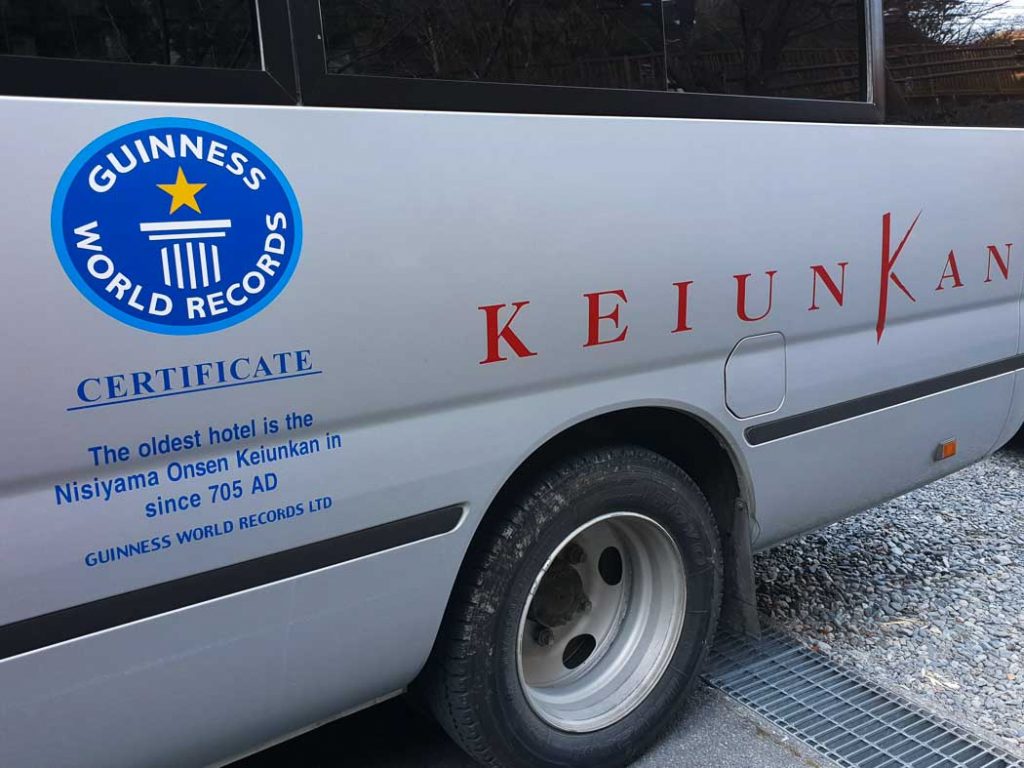
The writer paid for this experience in full. It was in January 2020 – just before COVID closed the world to international travel. All opinions expressed are her own.
Leave a Reply